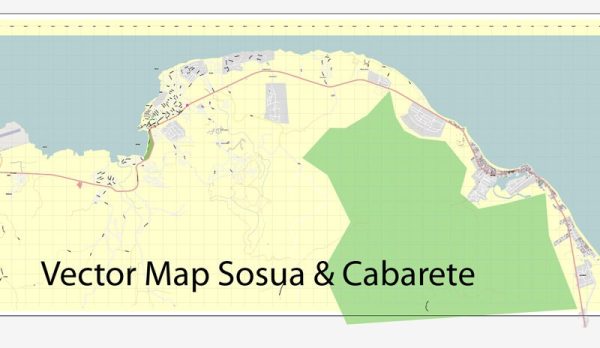Sosua and Cabarete are two popular coastal towns located in the Dominican Republic, in the province of Puerto Plata. While they are distinct towns, they are located very close to each other and share some ecological characteristics. Here’s an ecological description of the Sosua and Cabarete area:
- Coastal Ecosystems: Sosua and Cabarete are known for their stunning coastal ecosystems. The region features beautiful beaches with soft, golden sands and crystal-clear turquoise waters. These beaches are fringed with palm trees and other coastal vegetation, creating a picturesque coastal landscape. These coastal ecosystems are essential for the local tourism industry and offer a variety of recreational activities such as swimming, snorkeling, and windsurfing.
- Coral Reefs: The north coast of the Dominican Republic, including Sosua and Cabarete, is home to some of the most diverse and well-preserved coral reefs in the Caribbean. These coral reefs are vital to the marine ecosystem, providing habitat for a wide variety of marine species. Snorkeling and scuba diving are popular activities that allow visitors to explore these underwater ecosystems.
- Tropical Rainforests: Inland from the coast, the region is characterized by lush, tropical rainforests. These rainforests are home to diverse flora and fauna, including various species of birds, reptiles, and insects. The rainforests also play a crucial role in maintaining the ecological balance and are a source of freshwater for the region.
- Biodiversity: The Sosua and Cabarete area is known for its rich biodiversity. You can find various species of birds, butterflies, and tropical plants in the surrounding forests. Additionally, the coastal areas are home to a variety of marine life, including colorful fish, sea turtles, and other marine creatures.
- River Systems: Several rivers flow through the region, providing freshwater to the ecosystems and serving as an important resource for the local communities. The rivers also create opportunities for river-based activities like rafting and tubing.
- Environmental Conservation Efforts: The Dominican Republic government and various local and international organizations have made efforts to protect and conserve the natural environment in this area. Initiatives include the establishment of marine protected areas and efforts to combat pollution and overfishing to preserve the marine ecosystem.
- Climate: The region has a tropical climate with warm temperatures throughout the year. The wet season typically occurs from May to November, while the dry season is from December to April. This climate contributes to the lush vegetation and diverse ecosystems in the area.
In summary, Sosua and Cabarete in the Dominican Republic boast a rich and diverse array of ecological features, from pristine beaches and coral reefs to lush rainforests and river systems. The region’s natural beauty and biodiversity make it a popular destination for tourists interested in eco-tourism and outdoor activities. Conservation efforts are ongoing to protect and preserve these valuable ecosystems for future generations.


 Author: Kirill Shrayber, Ph.D.
Author: Kirill Shrayber, Ph.D.